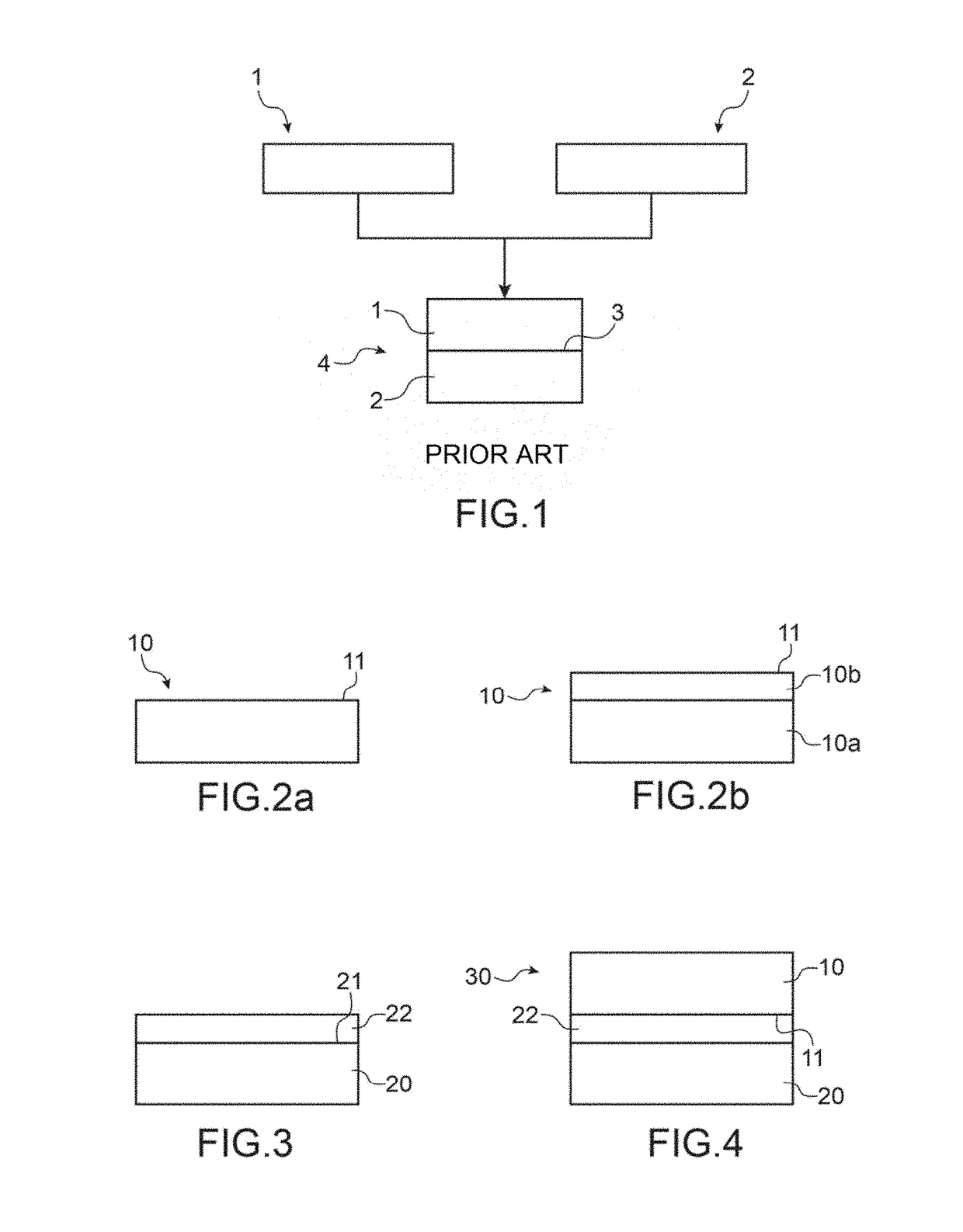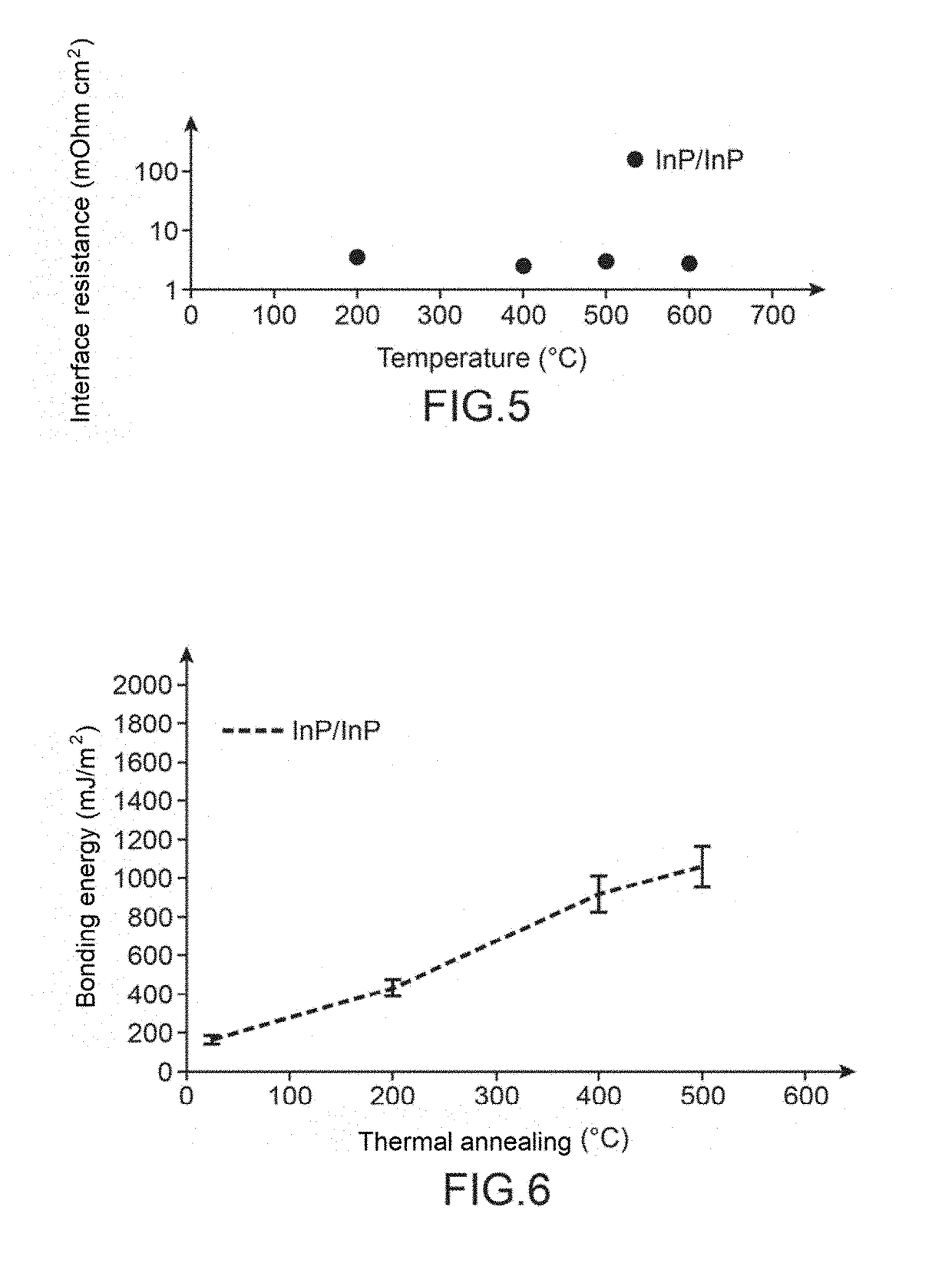Method for assembling substrates by bonding indium phosphate surfaces
a technology of indium phosphate and substrate, which is applied in the direction of semiconductor devices, semiconductor/solid-state device details, electrical apparatus, etc., can solve the problems of reducing the throughput required in microelectronics or optronics industries, affecting the quality of substrates, and reducing the quantity of water. , to prevent the degradation of electrical properties, the effect of reducing the quantity of water
- Summary
- Abstract
- Description
- Claims
- Application Information
AI Technical Summary
Benefits of technology
Problems solved by technology
Method used
Image
Examples
first embodiment
[0072] the method for assembling, shown in FIGS. 2a and 2b, comprises a step a) consisting in providing a first substrate 10.
[0073]The first substrate 10 comprises a first face 11.
[0074]The first face 11 is made from crystalline indium phosphide, advantageously the indium phosphide is monocrystalline.
[0075]Advantageously, the roughness of the first face 11 is suitable for direct bonding. For example, the roughness of the first face 11 is less than 1 nm RMS (“RMS” is the abbreviation of “Root Mean Square”), preferably less than 0.5 nm RMS, and very preferably less than 0.3 nm RMS, measured in 5 μm×5 μm atomic force microscopy scan.
[0076]The first substrate 10 can comprise a support substrate 10a whereon rests a layer of crystalline indium phosphide 10b. The exposed surface of the layer of crystalline indium phosphide 10b, advantageously monocrystalline, is then the first face 11.
[0077]The layer of indium phosphide 10b can have a thickness between 0.2 nm and 5 nm, preferably less than...
second embodiment
[0153]Still a step f) of fracture is executed after the step e) of assembling.
[0154]The step of fracturing comprises the initiation and the propagation of a fracture wave within the weakened area 12 in such a way that the first substrate 10 is detached from the useful layer 13, and as such allows for the transfer of said useful layer 13 on the exposed surface of the intermediate layer 22.
[0155]The step f) can be carried out by heat treatment, for example a treatment comprising an elevation in temperature.
[0156]Advantageously, the heat treatment is executed in an inert atmosphere, for example under Argon, at a temperature between 150° C. and 300° C., and a duration between 30 min and 3 h.
[0157]By way of example, for a dose of hydrogen of 6.5×1016 atm / cm2, implanted at an energy of 100 KeV in a first substrate 10 made of indium phosphide, an annealing executed at a temperature of 275° C., and a duration of 1 h30 will allow for the initiation and the propagation of a fracture wave wit...
PUM
| Property | Measurement | Unit |
|---|---|---|
| roughness | aaaaa | aaaaa |
| pressure | aaaaa | aaaaa |
| pressure | aaaaa | aaaaa |
Abstract
Description
Claims
Application Information
 Login to View More
Login to View More - R&D
- Intellectual Property
- Life Sciences
- Materials
- Tech Scout
- Unparalleled Data Quality
- Higher Quality Content
- 60% Fewer Hallucinations
Browse by: Latest US Patents, China's latest patents, Technical Efficacy Thesaurus, Application Domain, Technology Topic, Popular Technical Reports.
© 2025 PatSnap. All rights reserved.Legal|Privacy policy|Modern Slavery Act Transparency Statement|Sitemap|About US| Contact US: help@patsnap.com



